What Is a CDN?
A content delivery network (CDN) is a distributed system of servers that delivers web content—webpages, images, videos, etc.—to users based on their geographic location.
CDNs have three main components:
- Origin servers: The original servers that host the actual website content, such as text, images, videos, etc. Web content originates from these servers.
- Edge servers: CDNs spread servers geographically and locate them closer to end users. The edge servers store web content to deliver it faster to users.
- Points of presence (PoPs): Data centers containing edge servers. PoPs act like transportation hubs. Content will stop at these data centers before moving to other edge server locations closer to users.
CDNs have origin and edge servers closer to end users that store web content in temporary storage areas for faster access. This storage area is known as the “cache.”
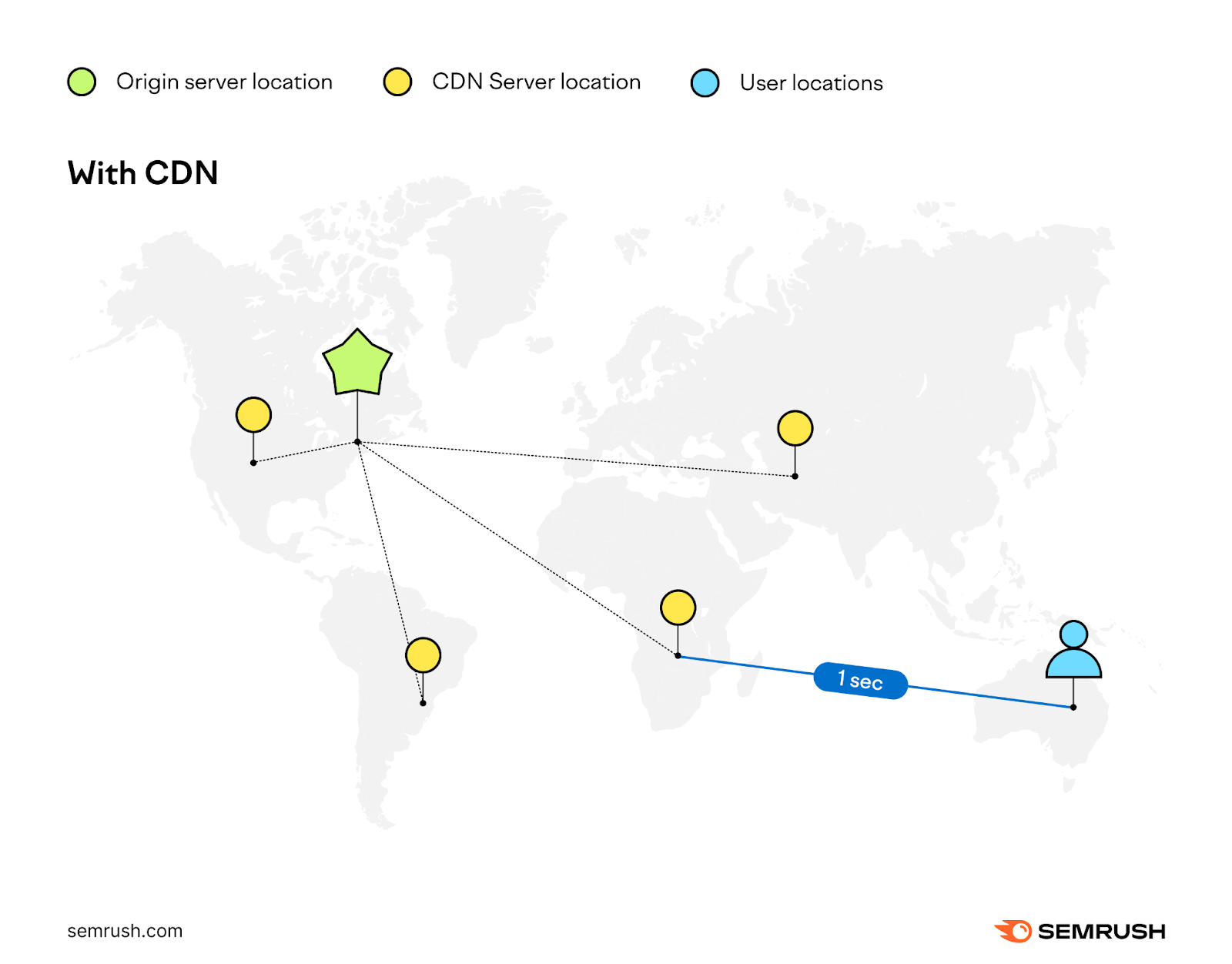
How Does a CDN Work?
CDNs can read your IP address and determine your location on the network. So when a user goes to a website that uses a CDN, the CDN looks at the user’s location and finds the edge server closest to them.
Here’s an example of how a CDN could work:
Let’s say your website’s origin server is in New York, and you have customers in Brisbane, Australia, who need to access your website.
When the Brisbane visitors try to open pages or access content on your site—instead of having the request travel 10,000 miles across the globe to your New York server—the CDN routes it to the nearest edge server.
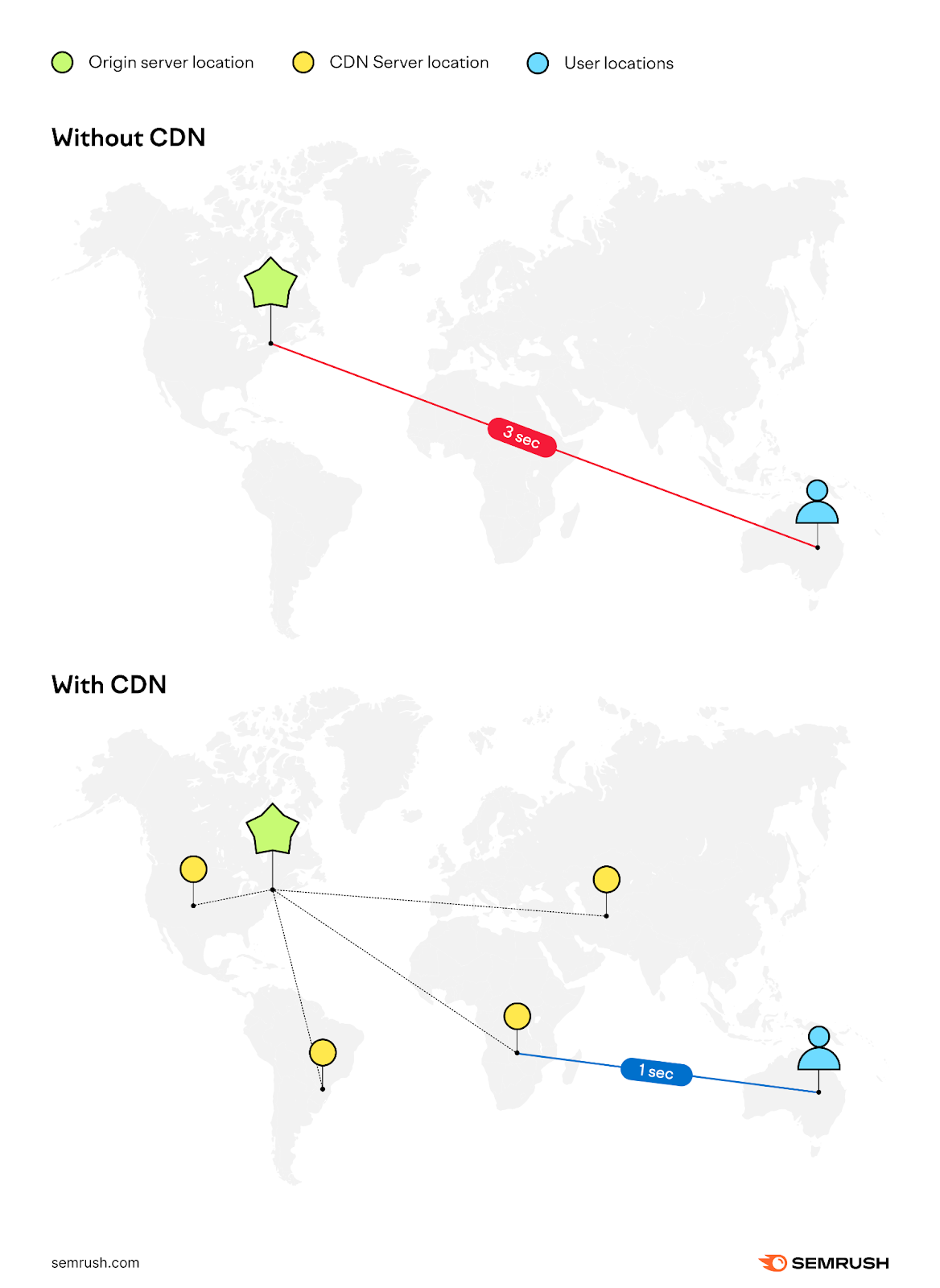
So rather than slow roundtrips traversing the globe, users in Brisbane get their page loads served up swiftly from an edge server much closer to them.
Loading the cached version of a webpage can decrease your page load speed and improve the user experience. Users get to see the page they want right away without waiting for it to come from the main origin servers far away.
What Are the Benefits of a CDN?
CDNs provide several performance, cost, and security benefits.
Improving Website Load Times
CDNs improve website load times by serving content from edge servers closer to visitors.
Less travel distance for data means faster page load times.
However, slower page load times can also be caused by other issues, such as poor coding, unoptimized images, or excessive page size.
You should identify and fix any non-CDN-related problems before implementing a CDN.
Tools like Semrush’s Site Audit can detect site issues impacting page load speed and provide fixes.
Here’s how:
First, click “Site Audit” from the left-hand menu and click “+ Create project” in the top right-hand corner.
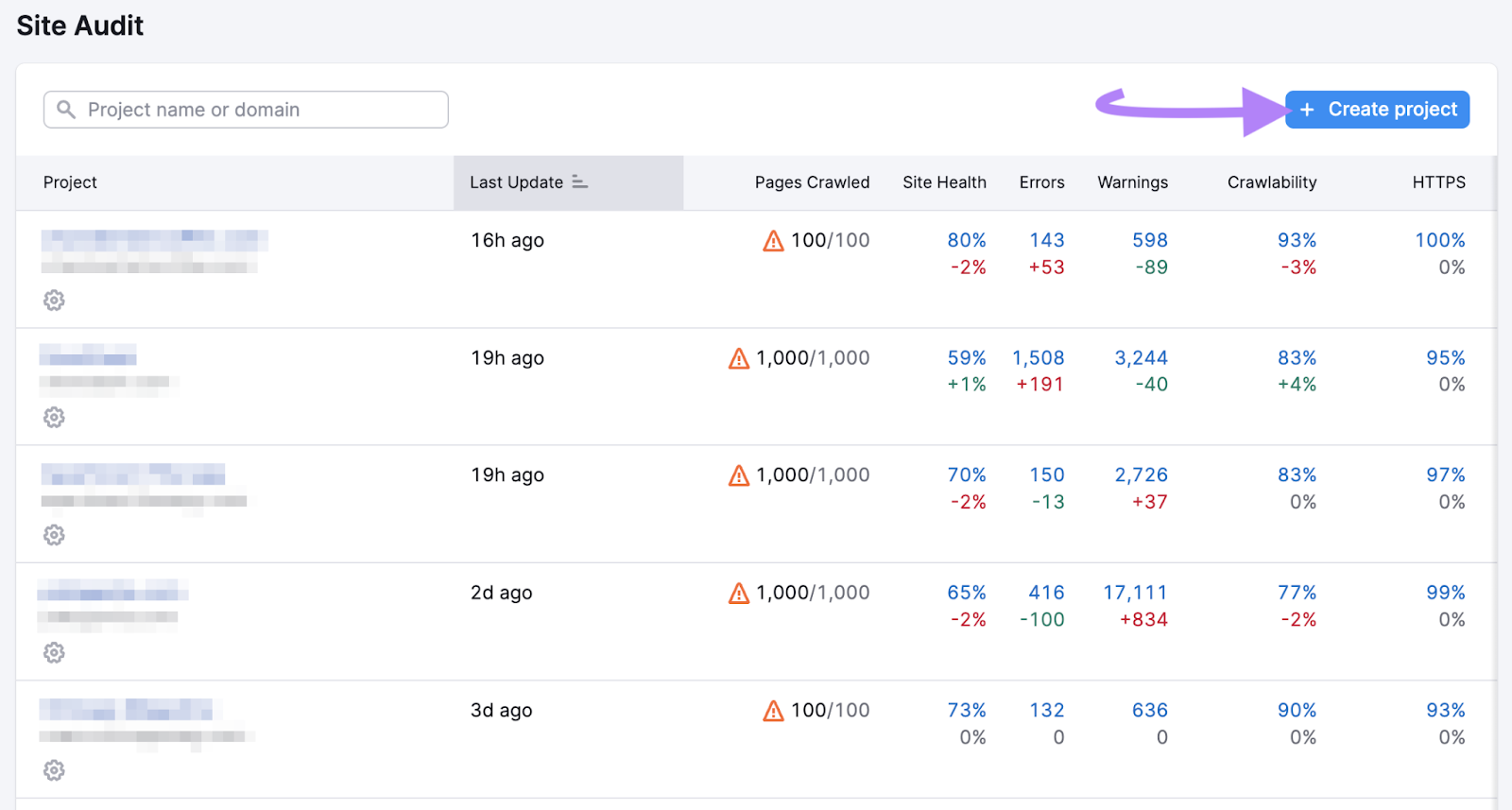
Enter your website URL and a project name and click “Create project.”
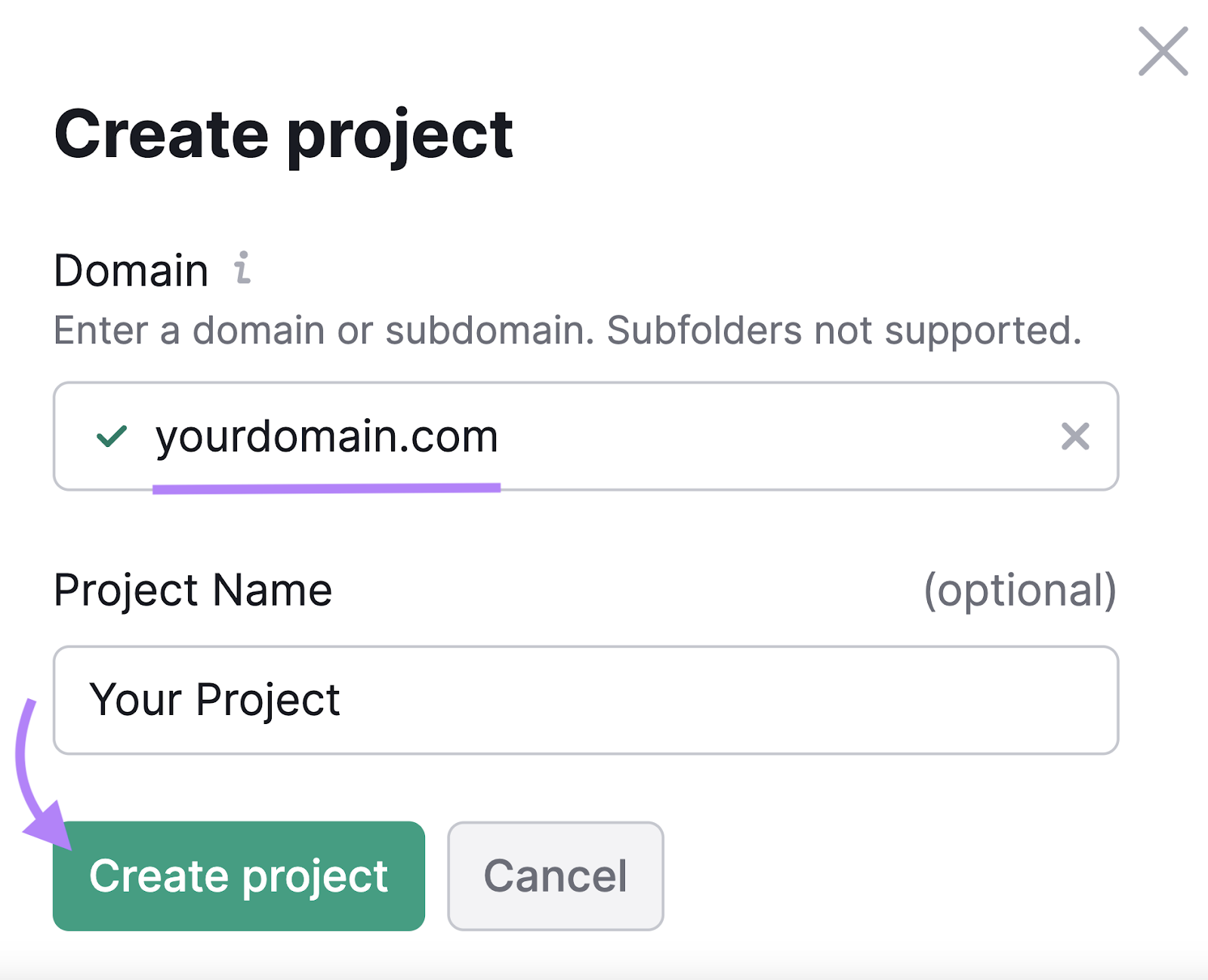
Configure your settings and click “Start Site Audit.”
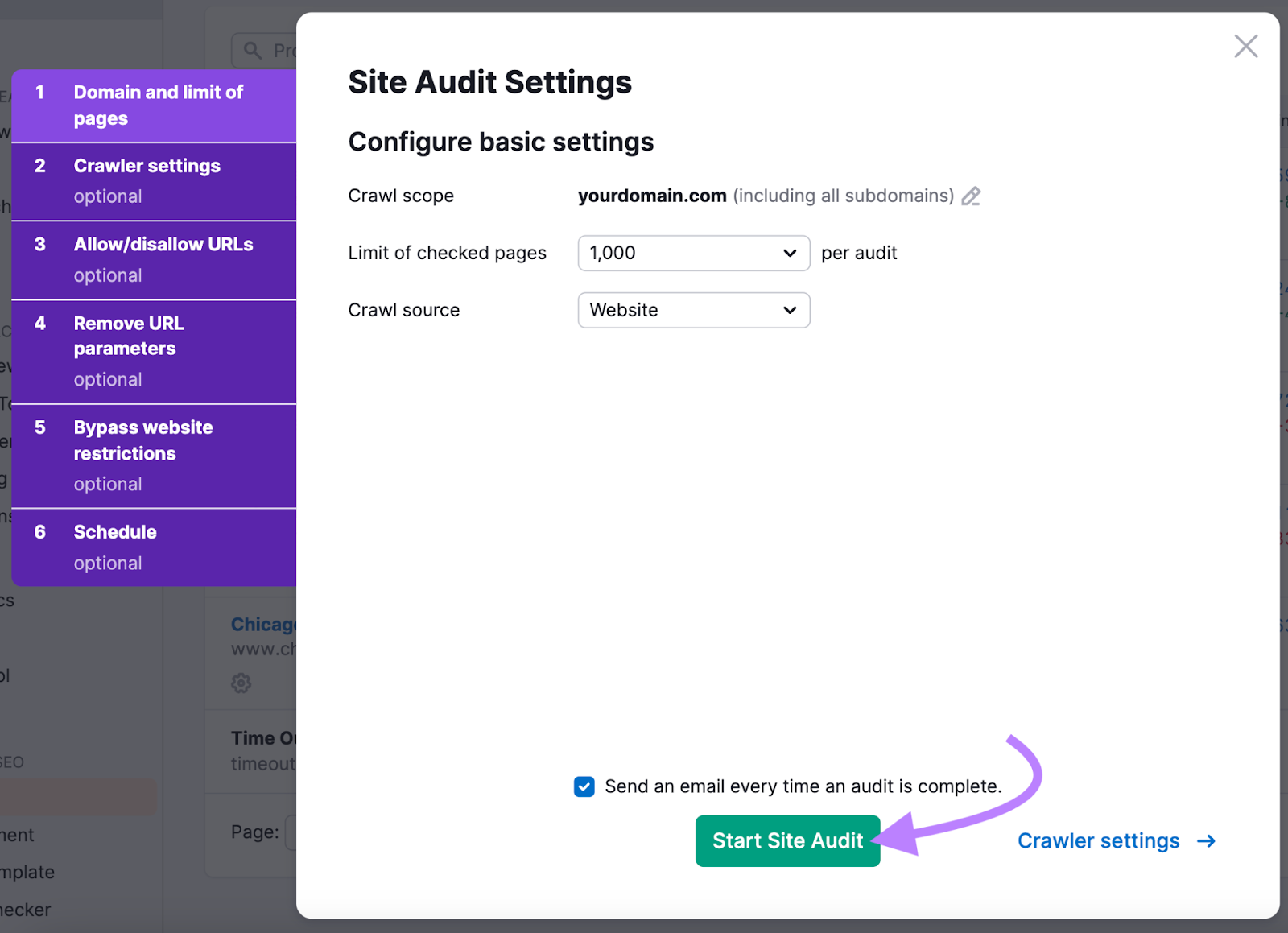
Then, click “View details” under the “Site Performance” heading.
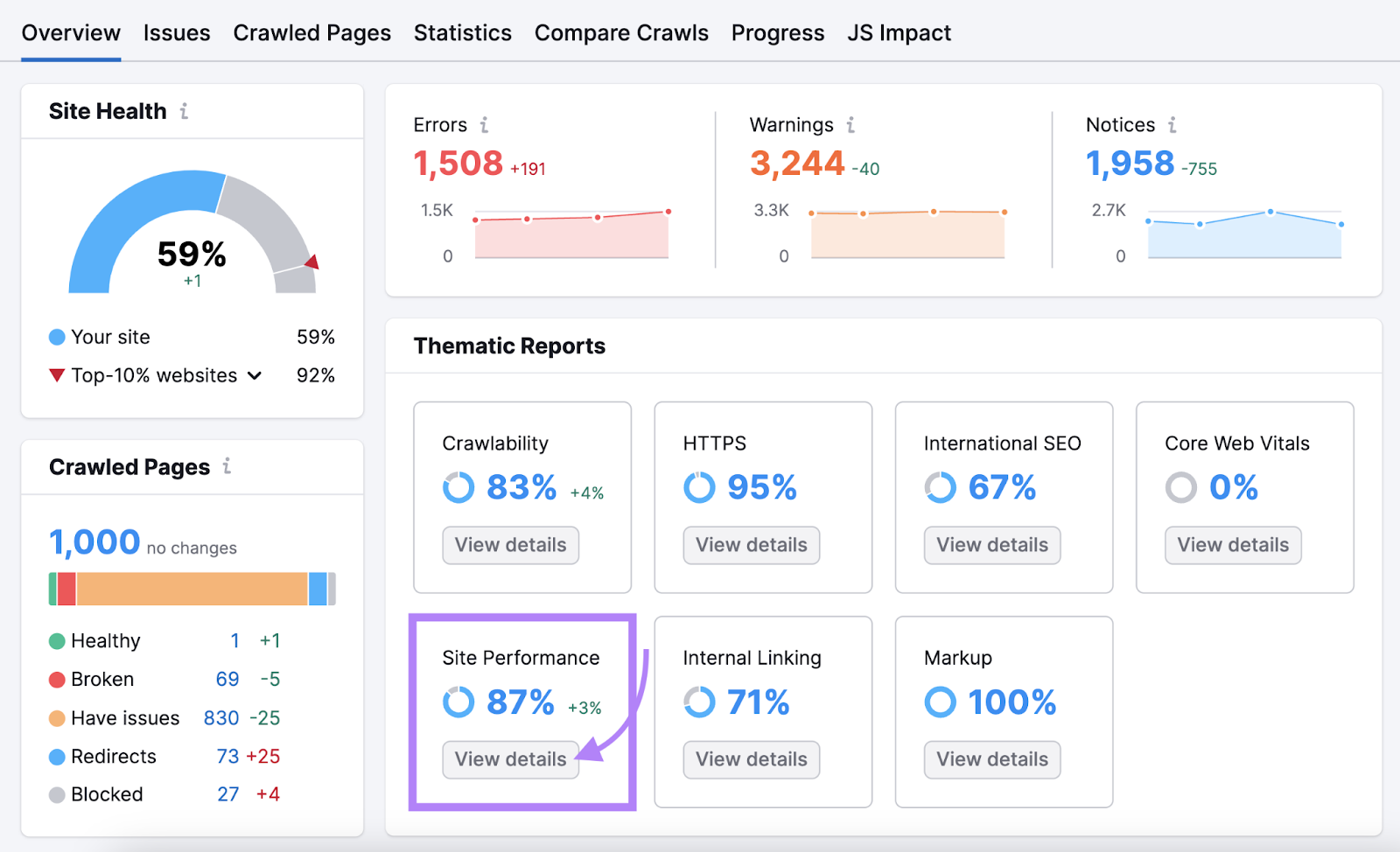
This will take you to an overview of issues that could slow down your site. For example, JavaScript or CSS files that are too large:
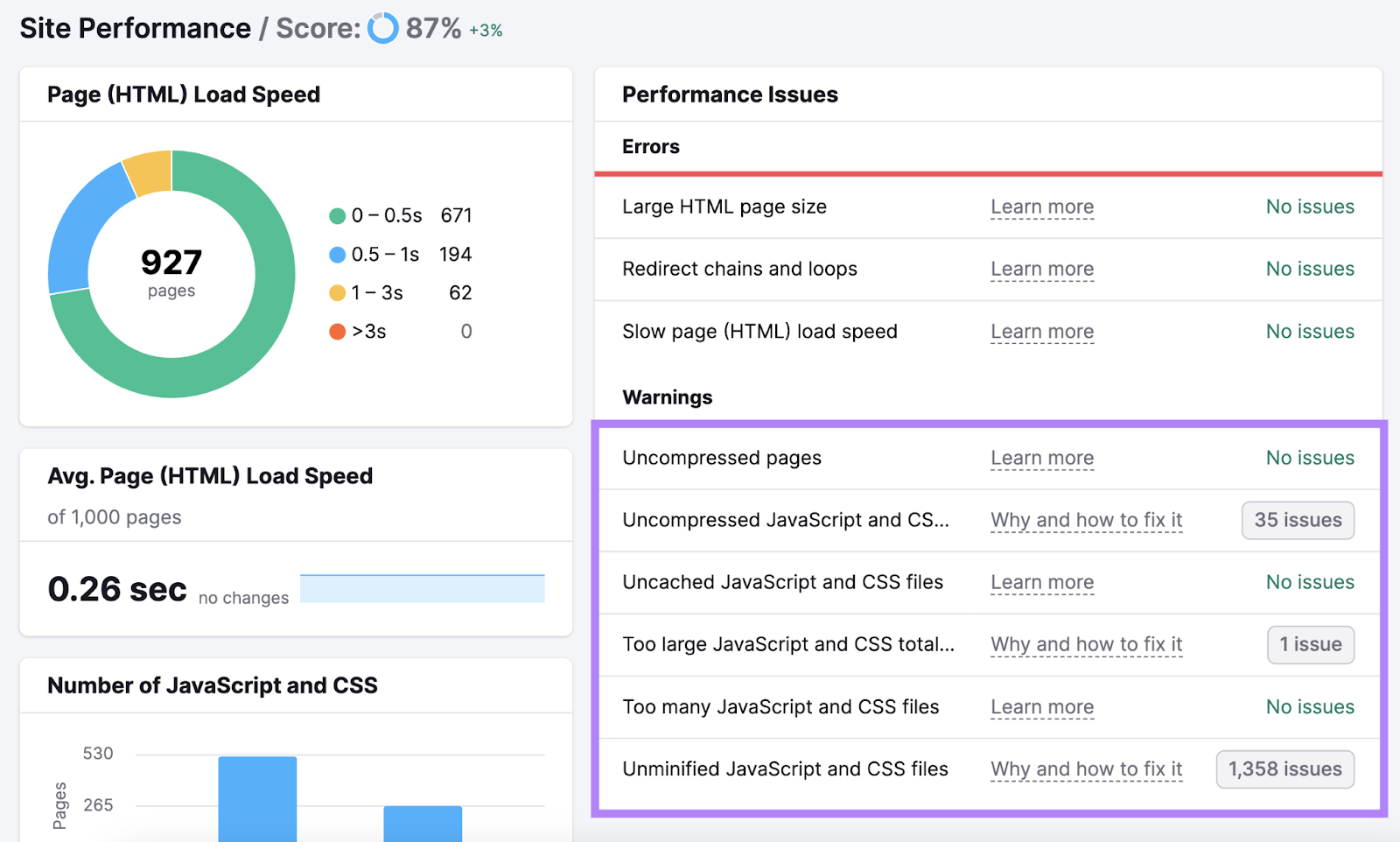
You can see how to fix each issue by hovering over “Why and how to fix it” next to the item.
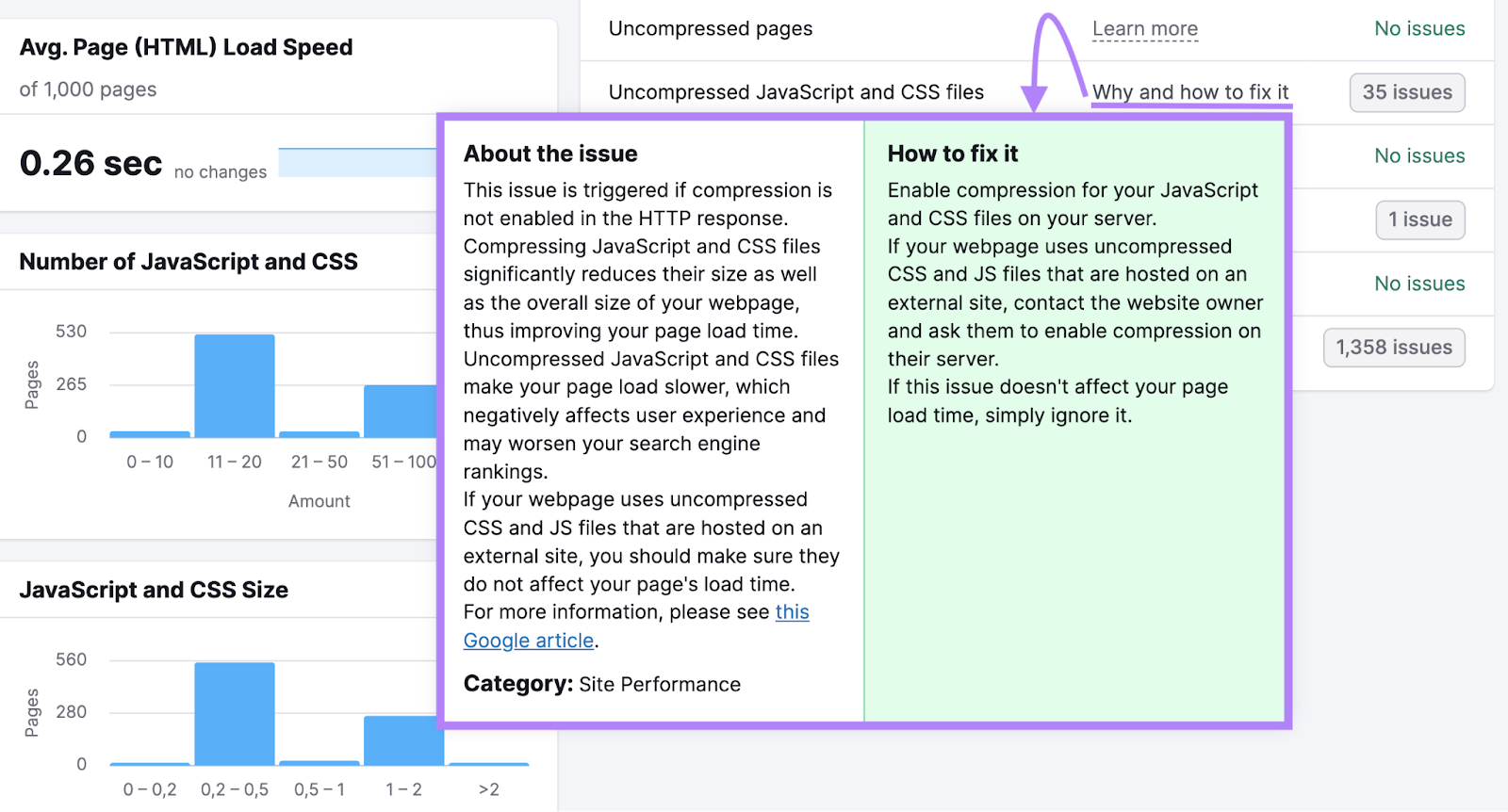
Fixing these site speed issues and adding a CDN can take page speeds to the next level.
Reducing Bandwidth Costs
Since edge servers handle most requests, CDNs can help you save on bandwidth costs and reduce traffic to origin servers.
- Without a CDN: All visitor requests go straight to your central servers. This can overload your servers and bandwidth as site traffic grows. For example, your servers can easily be overloaded by traffic spikes from events like new product releases, software updates, and viral posts.
- With a CDN: The edge servers handle most visitor requests. This reduces traffic to your origin server, lowering bandwidth usage and reducing costs from your central hosting infrastructure.
Since CDNs cache content locally, your central servers don’t have to send the same files repeatedly. The CDN handles delivering data that has been cached to nearby visitors—reducing server costs on your end.
Improving Website Uptime
CDNs improve uptime by replicating content across multiple edge servers. If one server goes down, others remain online. This removes single points of failure.
For example, if an edge server in North America goes down, the local edge servers in Asia and Europe will continue serving visitors.
Strengthening Website Security
CDNs can strengthen website security by protecting against common threats like distributed denial of service (DDoS) attacks.
A DDoS attack aims to make a website or online service unavailable by flooding it with fake traffic from multiple sources. Like this:
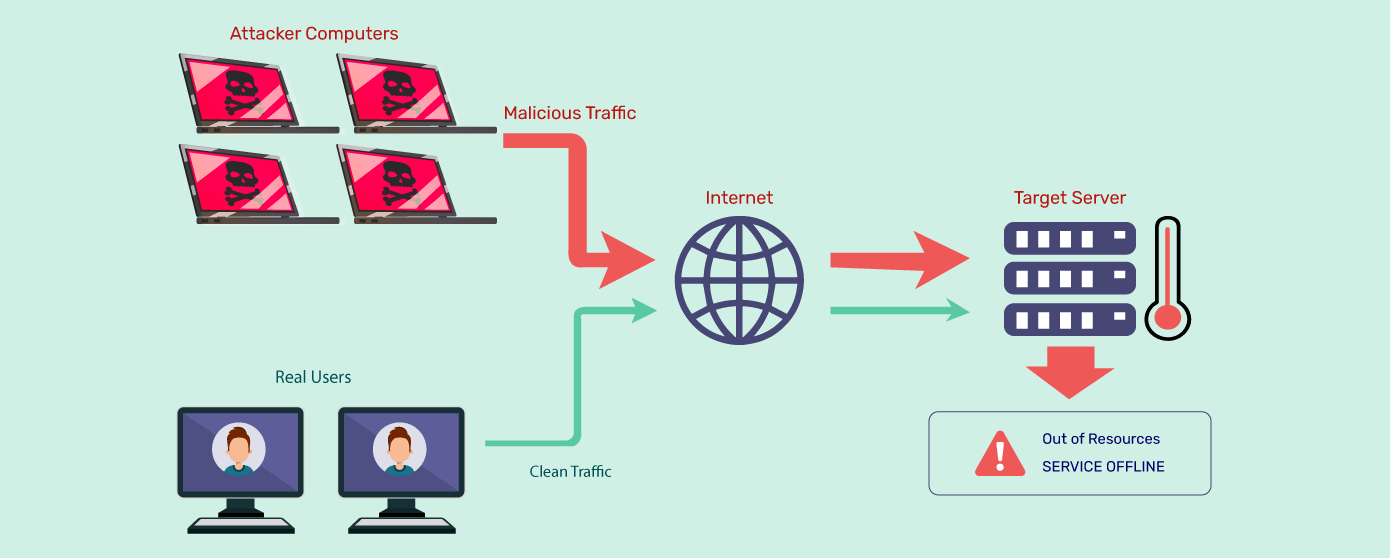
Image Source: Indusface
CDNs prevent individual servers from being overwhelmed by distributing this fake traffic across their global network.
Some CDNs also provide web application firewalls, DDoS protection services, and other security measures to detect and mitigate threats before they reach websites.
Considerations When Selecting a CDN
Cost Structure
CDNs offer pricing models like usage-based, tiered, flat-rate, or hybrid plans based on data transfer and traffic volumes.
Here’s how CDN pricing typically works:
- Flat-rate pricing: One monthly price regardless of usage
- Tiered pricing: Pay a fixed monthly fee based on traffic volume
- Hybrid models: Combine flat fees with usage charges beyond the allowance
- Usage-based pricing: Pay for the amount of data transferred/bandwidth used
Consider running trial tests with projected traffic volumes across your key locations. This can help determine the most cost-effective CDN plan based on your usage and performance needs.
Location of Edge Servers
The CDN’s edge servers should align with your target market locations. So, review your website analytics to identify countries/regions that generate the most traffic for your site.
For example, you can check demographic details by country in Google Analytics 4 (GA4) under Reports > User Attributes > Demographic details:
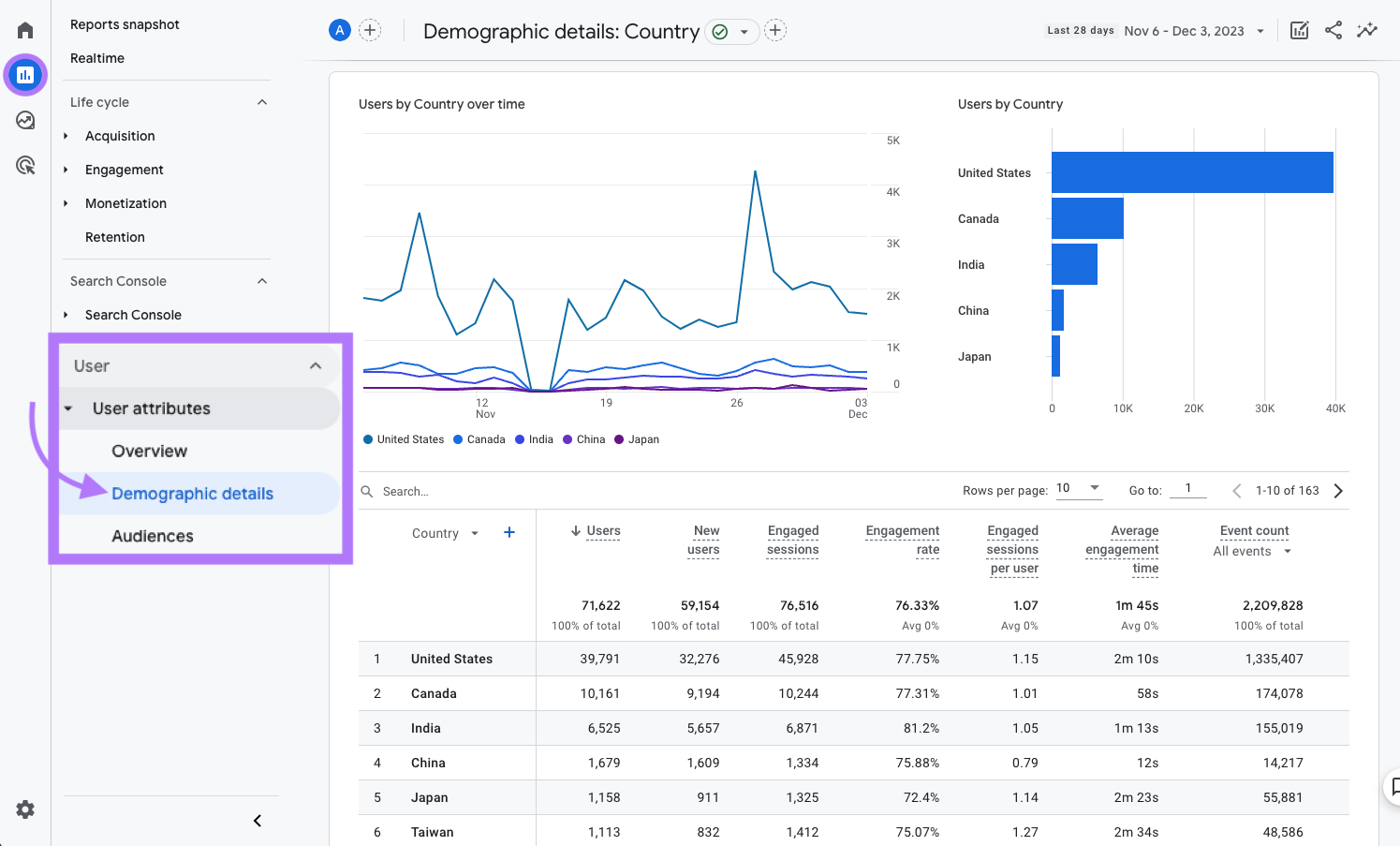
Selecting edge servers in key user locations after reviewing traffic analytics can mean faster load times for your target market.
Advanced Caching Options
CDNs allow you to customize caching rules that control how and when content is stored and served from the cache.
For example, with CDNs, you can:
- Set Time to Live (TTL) policies. TTL specifies how long content stays cached before automatically expiring. Short TTLs prevent outdated copies for frequently updated content.
- Configure rules to cache only certain file types or content. For example, you may want to cache common images but not cache restricted user profiles.
- Manually purge cached content when needed. Such as clearing out old product pages after a redesign.
- Separate caching rules for public versus private content. Public pages can be broadly cached, while private data may not be cached.
- Prioritize caching of frequently accessed static content. Like popular images, stylesheets, and JavaScript files.
Fine-tuning the caching controls allows you to minimize costs, reduce origin server load, keep data fresh, and increase page load speeds. By selectively caching content based on your needs.
Security Measures and Access Controls
When evaluating CDNs, ensure they provide security protections such as:
- DDoS mitigation: The CDN should absorb and mitigate DDoS attacks before they reach your origin servers
- Web Application Firewall (WAF): A WAF at edge servers can block common web threats and malicious bots
- Access controls: Access controls allow you to control who can access your content. One way to do this is by creating an “allowlist” of approved IP addresses.
- HTTPS support: Encrypted HTTPS connections keep data secure as it travels through the CDN's servers
Strong security measures are essential to safeguard your site and protect sensitive user data as it passes through the CDN.
Notable CDN Providers
Free and Low-Cost CDNs
Cloudflare
Cloudflare is a CDN and web security service that speeds up and protects websites. Cloudflare offers a free plan with an SSL certificate, DDoS protection, and a Web Application Firewall (WAF).
Their network of servers also spans over 300 cities and 100 countries and has been recognized as a leader in the 2022 IDC MarketScape for Worldwide Commercial Content Delivery Network Services.
Amazon CloudFront
Amazon CloudFront is another low-cost CDN service that Amazon Web Services (AWS) provides. It has security features similar to CloudFlare but a bigger network of servers.
CloudFront also integrates natively with other AWS services. Which enables rapid deployment.
CDNs Optimized for Media Delivery
Akamai
Akamai is a CDN that offers solutions for delivering media content like video streaming and large-scale downloads.
It has an Image & Video Manager solution that automatically optimizes images and videos for each user’s device and network connection to deliver the best experience. It transforms media through resizing, cropping, color changes, overlays, and more while reducing file size.
Fastly
Fastly provides a global cloud CDN platform with embedded security, instant scalability, and real-time visibility. The edge network is engineered specifically to accelerate the delivery of video content and live streams across websites, mobile applications, and APIs.
CDNs Integrated with Cloud Platforms
Microsoft Azure CDN
Microsoft Azure CDN is a CDN that integrates seamlessly with Azure services to deploy and activate within minutes. It has 192 PoPs across 109 metro cities globally.
Microsoft Azure CDN offers features similar to those of other CDNs, including delivery of large files and video streams, DDoS protection, and WAF.
Google Cloud CDN
Google Cloud CDN is a content delivery network integrated with Google Cloud Platform to accelerate the delivery of websites, applications, and cloud storage from Google Compute Engine.
With Google Cloud CDN, you can utilize Google’s extensive network of global edge locations to cache and distribute content closer to users.
Use a CDN to Your Advantage
A CDN can provide speed, security, and cost benefits for your website.
While evaluating CDN options, be sure to consider factors like pricing models, edge server locations aligned with your users, and required security features.
However, it’s important to remember slower page load times can also stem from other website issues unrelated to the CDN.
So before implementation, identify and fix non-CDN problems like unoptimized images, inefficient code, and other issues.
Use Site Audit to streamline this process and ensure optimal website performance.
